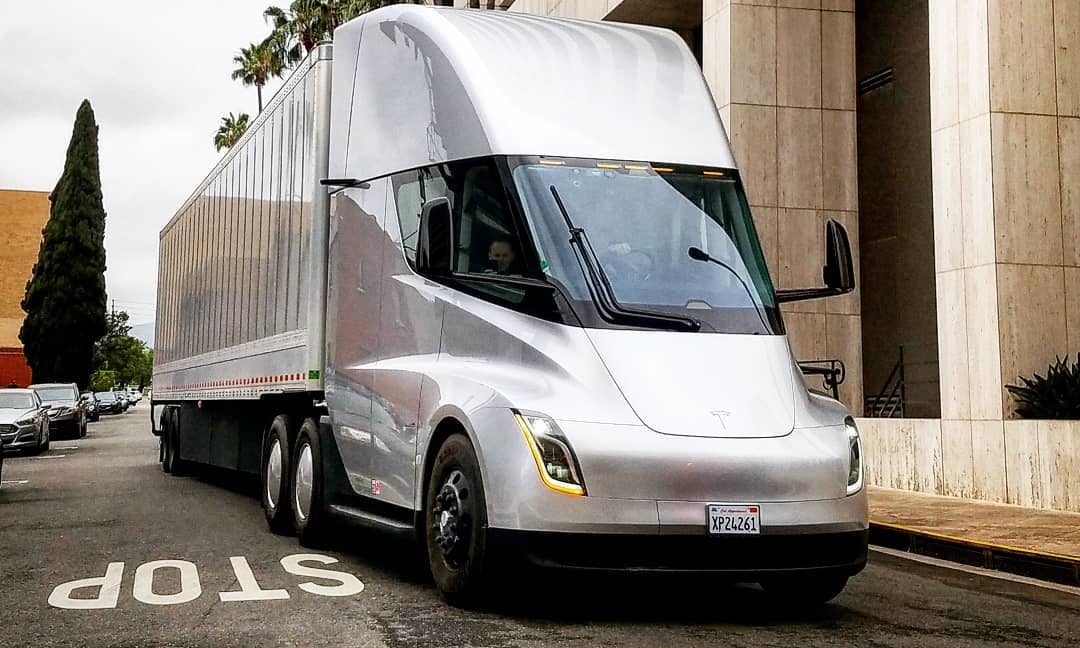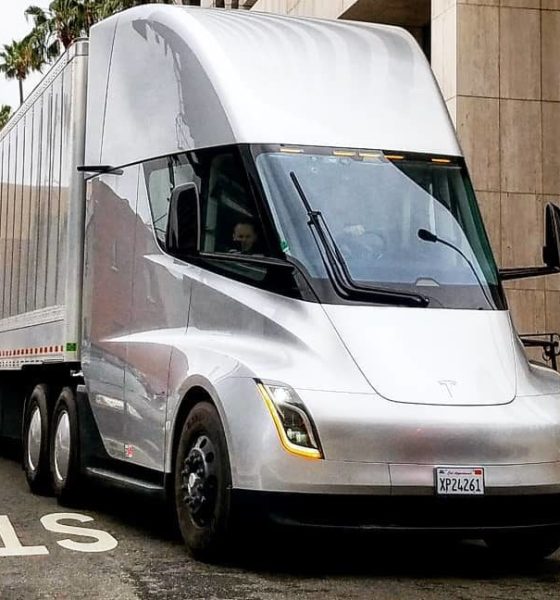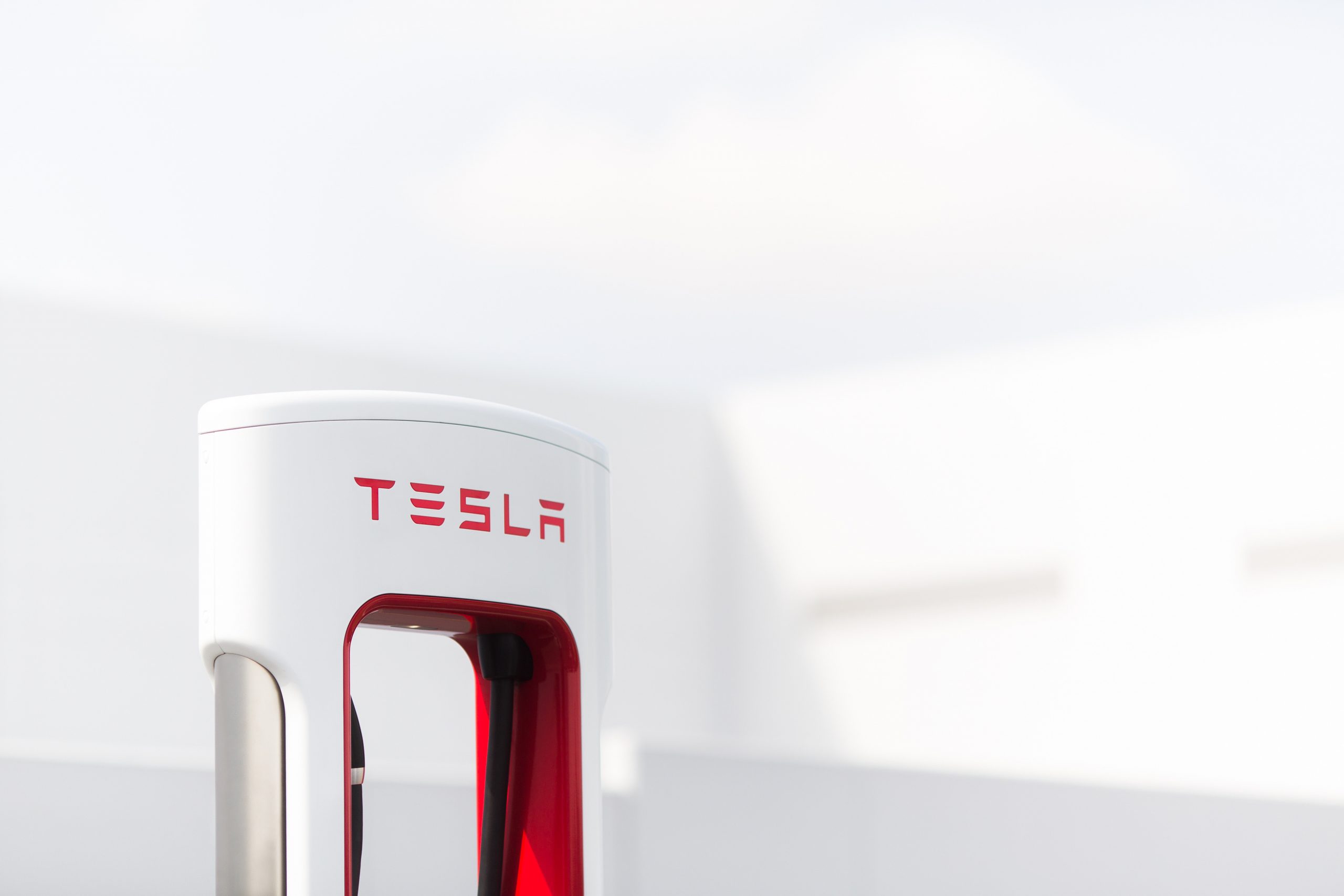

News
Tesla Semi truck production would showcase lessons gained from Model 3
Being the electric car maker’s first entry into the trucking industry, the stakes are high for the Tesla Semi. Just like the Model 3, Tesla could revolutionize the trucking industry if the Semi proves to be a success. The company is aiming to start production of the Semi sometime in 2019 — a target that exhibits Elon Musk’s tendency to adopt aggressive manufacturing timelines. That said, if Tesla’s progress in the Model 3 ramp is any indication, there is a good chance that the Semi could be Tesla’s first vehicle to not run into major problems when it starts production.
Tesla is no stranger to missed production deadlines. In 2007, Tesla announced that it has plans to build 10,000 of the then-mythical Model S sedan annually starting in 2009. Production was ultimately delayed, and the vehicle was introduced in June 2012. The Model X experienced an even more significant delay, with deliveries starting on September 2015 instead of its initially planned early 2014 release. Tesla’s latest vehicle, the Model 3, has experienced delays as well — an ordeal that CEO Elon Musk aptly dubbed as “production hell.” When the handover of the first 30 Model 3 was held last year, Musk announced that Tesla is aiming to produce 5,000 units of the electric sedan a week by the end of 2017. Tesla was only able to hit that target at the end of Q2 2018.
Considering Tesla’s history and reputation for delays, does this mean that the Semi would follow the same fate? Most likely not. On the contrary, the Semi might very well be the first Tesla vehicle that would not experience a delay as bad as its predecessors. Tesla might miss its 2019 target for the truck given that the timeline was announced by a very optimistic Elon Musk, but once manufacturing begins, there is a good possibility that the Semi would not take the company to “production hell” like the Model 3.
When Elon Musk unveiled the Semi last November, he pitched the vehicle as an electric truck that can disrupt the trucking industry. With stunning performance specs such as a 0-60 mph time in 5 seconds flat, a capability to haul 80,000 lbs of cargo, and a range of 500 miles per charge for the Long Range version, the Semi is a serious long-hauler. These impressive specs aside, one thing that made the Semi quite remarkable was the fact that it shared components with the Model 3, from its four electric motors to the two touchscreens on the driver’s console. A video of the Semi shared earlier this year on YouTube even showcased how the truck features an air vent similar to the Model 3.
Tesla is not done with the Semi either. As testing of the vehicle continues, Tesla is rolling out improvements to the truck’s design. Back in May, Elon Musk stated that the Semi’s range would be closer to 600 miles per charge. During the Q2 earnings call, Elon Musk also teased a new battery module “that’s actually lighter, better, (and) cheaper.” These new modules are expected to start production sometime in Q1 2019, which could result in vehicles being lighter and having more range — advantages that are pertinent for the electric long-hauler.
Tesla’s production ramp for the Model 3 proved to be a classic tale of trial and error, with a dash of automation-driven hubris thrown in. Over the past year, the company learned a lot of lessons as it evolved from an upstart automaker into a more mature car company. When Tesla starts the Semi’s production, there’s a good chance that it would no longer be a company that adopts unrealistic release timelines. Instead, it would be an automaker that has gained experience over years of missed deadlines. The fact that the Semi shares components with the electric sedan would be a given plus, but the real boost in the manufacturing of the electric truck would likely be caused the expertise that Tesla gained when it tackled the challenge of the Model 3 ramp.
The market for the Tesla Semi is vast, and so far, reactions from the market are encouraging. During the company’s Q1 2018 earnings call, Elon Musk and CTO JB Straubel noted that Tesla has around 2,000 reservations for the vehicle. Tesla has also acquired orders from companies such as PepsiCo, FedEx, and UPS in the United States and Bee’ah from the United Arab Emirates, to name a few.

News
Tesla FSD’s newest model is coming, and it sounds like ‘the last big piece of the puzzle’
“There’s a model that’s an order of magnitude larger that will be deployed in January or February 2026.”

Tesla Full Self-Driving’s newest model is coming very soon, and from what it sounds like, it could be “the last big piece of the puzzle,” as CEO Elon Musk said in late November.
During the xAI Hackathon on Tuesday, Musk was available for a Q&A session, where he revealed some details about Robotaxi and Tesla’s plans for removing Robotaxi Safety Monitors, and some information on a future FSD model.
While he said Full Self-Driving’s unsupervised capability is “pretty much solved,” and confirmed it will remove Safety Monitors in the next three weeks, questions about the company’s ability to give this FSD version to current owners came to mind.
Musk said a new FSD model is coming in about a month or two that will be an order-of-magnitude larger and will include more reasoning and reinforcement learning.
He said:
“There’s a model that’s an order of magnitude larger that will be deployed in January or February 2026. We’re gonna add a lot of reasoning and RL (reinforcement learning). To get to serious scale, Tesla will probably need to build a giant chip fab. To have a few hundred gigawatts of AI chips per year, I don’t see that capability coming online fast enough, so we will probably have to build a fab.”
NEWS: Elon Musk says FSD Unsupervised is “pretty much solved at this point” and that @Tesla will be launching Robotaxis with no safety monitors in about 3 weeks in Austin, Texas. He also teased a new FSD model is coming in about 1-2 months.
“We’re just going through validation… https://t.co/Msne72cgMB pic.twitter.com/i3wfKX3Z0r
— Sawyer Merritt (@SawyerMerritt) December 10, 2025
It rings back to late November when Musk said that v14.3 “is where the last big piece of the puzzle finally lands.”
With the advancements made through Full Self-Driving v14 and v14.2, there seems to be a greater confidence in solving self-driving completely. Musk has also personally said that driver monitoring has been more relaxed, and looking at your phone won’t prompt as many alerts in the latest v14.2.1.
This is another indication that Tesla is getting closer to allowing people to take their eyes off the road completely.
Along with the Robotaxi program’s success, there is evidence that Tesla could be close to solving FSD. However, it is not perfect. We’ve had our own complaints with FSD, and although we feel it is the best ADAS on the market, it is not, in its current form, able to perform everything needed on roads.
But it is close.
That’s why there is some legitimate belief that Tesla could be releasing a version capable of no supervision in the coming months.
All we can say is, we’ll see.
Investor's Corner
SpaceX IPO is coming, CEO Elon Musk confirms
However, it appears Musk is ready for SpaceX to go public, as Ars Technica Senior Space Editor Eric Berger wrote an op-ed that indicated he thought SpaceX would go public soon. Musk replied, basically confirming it.

Elon Musk confirmed through a post on X that a SpaceX initial public offering (IPO) is on the way after hinting at it several times earlier this year.
It also comes one day after Bloomberg reported that SpaceX was aiming for a valuation of $1.5 trillion, adding that it wanted to raise $30 billion.
Musk has been transparent for most of the year that he wanted to try to figure out a way to get Tesla shareholders to invest in SpaceX, giving them access to the stock.
He has also recognized the issues of having a public stock, like litigation exposure, quarterly reporting pressures, and other inconveniences.
However, it appears Musk is ready for SpaceX to go public, as Ars Technica Senior Space Editor Eric Berger wrote an op-ed that indicated he thought SpaceX would go public soon.
Musk replied, basically confirming it:
As usual, Eric is accurate
— Elon Musk (@elonmusk) December 10, 2025
Berger believes the IPO would help support the need for $30 billion or more in capital needed to fund AI integration projects, such as space-based data centers and lunar satellite factories. Musk confirmed recently that SpaceX “will be doing” data centers in orbit.
AI appears to be a “key part” of SpaceX getting to Musk, Berger also wrote. When writing about whether or not Optimus is a viable project and product for the company, he says that none of that matters. Musk thinks it is, and that’s all that matters.
It seems like Musk has certainly mulled something this big for a very long time, and the idea of taking SpaceX public is not just likely; it is necessary for the company to get to Mars.
The details of when SpaceX will finally hit that public status are not known. Many of the reports that came out over the past few days indicate it would happen in 2026, so sooner rather than later.
But there are a lot of things on Musk’s plate early next year, especially with Cybercab production, the potential launch of Unsupervised Full Self-Driving, and the Roadster unveiling, all planned for Q1.
News
Tesla adds 15th automaker to Supercharger access in 2025

Tesla has added the 15th automaker to the growing list of companies whose EVs can utilize the Supercharger Network this year, as BMW is the latest company to gain access to the largest charging infrastructure in the world.
BMW became the 15th company in 2025 to gain Tesla Supercharger access, after the company confirmed to its EV owners that they could use any of the more than 25,000 Supercharging stalls in North America.
Welcome @BMW owners.
Download the Tesla app to charge → https://t.co/vnu0NHA7Ab
— Tesla Charging (@TeslaCharging) December 10, 2025
Newer BMW all-electric cars, like the i4, i5, i7, and iX, are able to utilize Tesla’s V3 and V4 Superchargers. These are the exact model years, via the BMW Blog:
- i4: 2022-2026 model years
- i5: 2024-2025 model years
- 2026 i5 (eDrive40 and xDrive40) after software update in Spring 2026
- i7: 2023-2026 model years
- iX: 2022-2025 model years
- 2026 iX (all versions) after software update in Spring 2026
With the expansion of the companies that gained access in 2025 to the Tesla Supercharger Network, a vast majority of non-Tesla EVs are able to use the charging stalls to gain range in their cars.
So far in 2025, Tesla has enabled Supercharger access to:
- Audi
- BMW
- Genesis
- Honda
- Hyundai
- Jaguar Land Rover
- Kia
- Lucid
- Mercedes-Benz
- Nissan
- Polestar
- Subaru
- Toyota
- Volkswagen
- Volvo
Drivers with BMW EVs who wish to charge at Tesla Superchargers must use an NACS-to-CCS1 adapter. In Q2 2026, BMW plans to release its official adapter, but there are third-party options available in the meantime.
They will also have to use the Tesla App to enable Supercharging access to determine rates and availability. It is a relatively seamless process.








